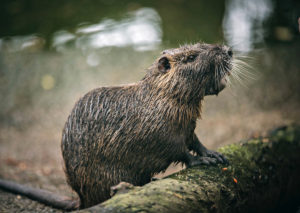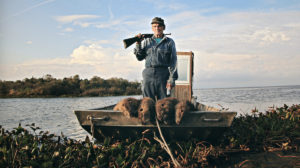Film Review: “Rodents of Unusual Size” Are the Real Deal
Written by: Christopher Llewellyn Reed | February 19th, 2019

Rodents of Unusual Size (Quinn Costello/Chris Metzler/Jeff Springer, 2017) 4 out of 4 stars.
Fresh off its PBS debut, following a festival and theatrical run that started in 2017, the fascinating Rodents of Unusual Size, a documentary about how a twenty-pound rat spells doom for the human race, comes out on Amazon today. I, for one, prefer to know my enemy, and have no intention to go quietly. Bring it on, O Evil Rodent! You shall not defeat me.
Actually, you just might. Plus, you don’t look evil. In fact, you’re kind of cute. Oh, no! I am, in fact, doomed, then! Perhaps, O Viewer, you shall have better luck, especially if you watch the film, from directors Quinn Costello, Chris Metzler (Everyday Sunshine: The Story of Fishbone) and Jeff Springer (Plagues & Pleasures on the Salton Sea). Mixing present-day footage and interviews with archival photos, animations and a little bit of voiceover narration from actor Wendell Pierce (Runaway Hearts), Rodents of Unusual Size offers deserved much ado about a very big problem.
The nutria, or Myocastor coypus, is an animal native to South America that was brought to Louisiana in the 1930s to be bred for its fur, of which it has a rich, copious amount. It also has large, sturdy orange teeth, the better to eat all vegetation in its path. Sometime after its arrival in the United States, some of its species escaped (or were released) from captivity, quickly beginning to breed … well, like rats. For a while, however, their numbers were kept at a reasonably low level, since trappers hunted them for their pelts, exactly as per the importers’ original intentions. But once the wearing of fur became stigmatized in the 1970s and 1980s, hunting dropped off, and nutria populations exploded. Big deal, right? It’s just a rat, and we have plenty of those, already.

Think again. Did I mention the teeth? Pair that with a boundless appetite for greenery – particularly marsh grasses and plant roots that anchor shorelines – and you have a recipe for ecological disaster. With no natural predators in their new home, and with webbed feet that make them equally at ease in water as on land, these critters get around, and spread … The Louisiana coast has suffered major devastation as its land, robbed of the plants that keep it firmly anchored against the elements. erodes and disappears into the sea. Moving faster even than climate change, the nutria is doing significant environmental damage wherever it goes.
But we humans are not giving up without a fight. The Louisiana Department of Wildlife and Fisheries has placed a $5 bounty on each nutria tail a hunter can bring in. Designers like Cree McRee, of Righteous Fur, are trying to bring fur back by pointing out the benefits of reducing the nutria population. Other folks are even attempting to make of the nutria a sought-after culinary delicacy (it tastes like rabbit, they say), though the fact that it is classified as a kind of rat (albeit a “spiny” one) complicates the marketing. We meet all these players in the unfolding drama, even those who would keep nutria as pets (they may be a danger to the planet but are pretty cuddly). Forget the fantastical stakes of the next big Marvel adventure; this is the real deal, happening here and now. Help!


